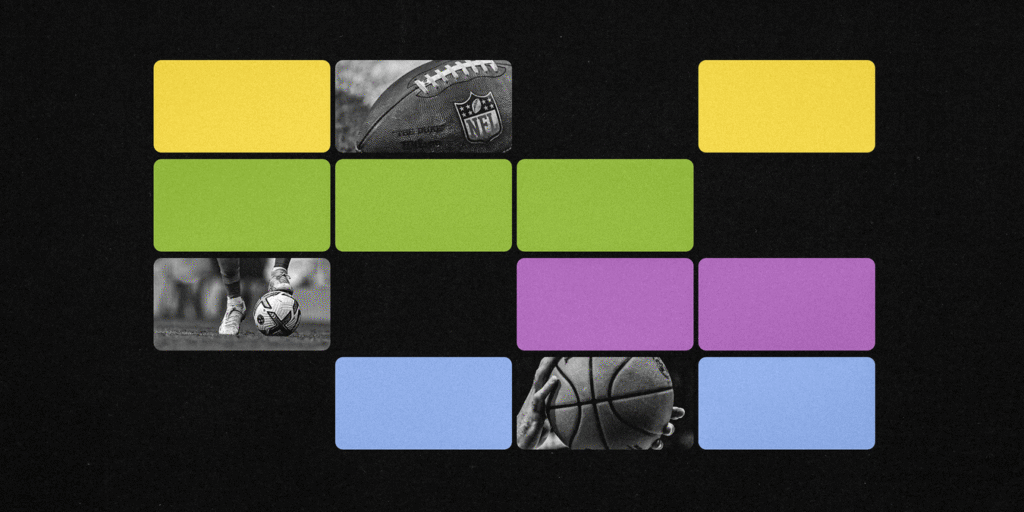The Power of Sports Connections in Building Strong Communities
Introduction
Sports have always been more than scores and standings. Behind every game is a web of friendships, shared moments, and the kind of trust that grows only when people strive toward a common goal. These sports connections—between teammates, supporters, families, and neighborhoods—play a deeper role in holding communities together. They offer familiarity, belonging, and identity in a world that often feels fast‑paced and fragmented. This article explores how those connections shape stronger, healthier, and more unified communities.
Why Sports Create Unique Social Bonds
Sports bring people together through a rare blend of emotion, cooperation, and shared experience. When individuals face challenges on the field or cheer from the sidelines, they build bonds that feel organic rather than forced. Social psychologists such as Henri Tajfel have long emphasized how shared group identity strengthens relationships, and sports offer one of the clearest examples of this principle in action. The highs of victory and the lows of defeat create emotional memories that deepen trust and understanding. Whether it’s a parent cheering for a child or strangers celebrating a team win, these small moments form lasting interpersonal bridges.
Sports as a Bridge Across Diverse Backgrounds
One of the most powerful aspects of sports connections is their ability to bring together people who might otherwise never cross paths. Sports don’t require a shared language, background, or income level. They create a neutral space where differences matter less than teamwork or support. Research from the Aspen Institute’s Sports & Society Program shows that local sports initiatives improve social cohesion in neighborhoods with diverse populations. When children from different cultures join the same team or fans from various communities gather for a local match, the unfamiliar becomes familiar. What starts as a game often turns into a lifelong appreciation for diversity.
Local Teams and Community Identity
Many towns and cities rally around local teams, and these teams often become symbols of pride and unity. Small communities, in particular, find identity through hometown sports traditions. Studies published in the Journal of Community Psychology highlight how shared sports rituals—tailgates, community parades, or school homecoming games—strengthen a sense of belonging. These rituals aren’t just entertainment; they reinforce a collective identity that gives residents something to celebrate together. Volunteers, coaches, and local athletes often become community role models, showing how sports can reflect the values a community holds dear.
Youth Sports and Early Community Engagement
Youth sports create some of the earliest and most influential sports connections in a person’s life. When children learn teamwork, empathy, and respect on the field, they carry those values into adulthood. Parents and guardians also form connections with one another, creating supportive networks that benefit the entire neighborhood. According to research from the Positive Coaching Alliance and Project Play, participation in youth sports is linked to improved social skills, better academic performance, and stronger community involvement later in life. When families gather around games, practices, and tournaments, they build a web of support that reaches far beyond the field.
Sports and Community Health
Communities that embrace sports tend to be healthier—physically and mentally. Physical activity plays a major role in lowering risks for chronic conditions such as heart disease and diabetes, according to the Centers for Disease Control and Prevention. But beyond health statistics, the emotional support that comes from being part of a team or fan group is equally meaningful. Belonging is a basic human need, and the shared routines of sports help meet it. Community fun runs, recreational leagues, and outdoor fitness programs all create opportunities for people to stay active while connecting with neighbors in a supportive environment.
Economic Benefits Flowing from Sports
Sports also strengthen communities through economic growth. Local businesses thrive during sports seasons, whether they’re selling food, merchandise, or sporting equipment. A report by the Sports & Fitness Industry Association notes that community sports events generate steady local spending that benefits small businesses. Construction and maintenance of fields, arenas, and recreation centers create jobs. Local tournaments bring traffic to restaurants and shops. When a community invests in sports programs, it often sees returns not only in health and connection but in economic vitality as well.
Digital Sports Communities
The rise of digital platforms has expanded what it means to form sports connections. Fans now interact in online spaces that feel just as meaningful as in‑person gatherings. Social media groups, live‑stream chats, and community forums provide places for people to share insights, celebrate wins, or support teams from afar. These digital interactions often spill back into the real world, strengthening relationships between neighbors who might discover their shared enthusiasm online before meeting in person. Studies on digital fandom from the University of Southern California highlight that online sports communities create a sense of camaraderie similar to in‑stadium experiences.

Challenges in Building Community Through Sports
Sports offer enormous benefits, but they also present challenges that communities must navigate carefully. Competition can bring out the best in people, but it can also lead to conflict when emotions run high. Economic barriers prevent many families from participating in organized sports, especially in areas where fees and equipment costs are high. Research from the Aspen Institute shows that lower-income youth are significantly less likely to access quality sports programs. When communities acknowledge these barriers and address them directly—through scholarships, equipment drives, and inclusive policies—they ensure that the power of sports is accessible to everyone.
Strengthening Sports Connections in Communities
Communities that want to deepen their sports connections can take practical steps that make programs more inclusive and engaging. Offering low‑cost or free youth leagues can open the door for families who might otherwise feel left out. Schools, recreation centers, and local clubs can build partnerships to share facilities and resources. Volunteer opportunities give residents a chance to contribute and feel invested. Public parks and open recreation spaces encourage spontaneous play, removing the formality that sometimes keeps people from participating. By prioritizing accessibility and collaboration, communities create a healthier environment for sports participation and connection.
Conclusion
Sports have an extraordinary ability to bring people together, cutting across boundaries that often divide us. From youth leagues to local teams to online fan communities, the sports connections we form are powerful anchors that strengthen neighborhoods and nurture belonging. They remind us that joy, teamwork, and shared experience are essential to human well‑being. Today’s communities benefit when they invest in sports—not just as entertainment, but as a foundation for unity, health, and collective growth. When people come together to play, cheer, and support one another, they build bonds that last far beyond the final whistle.
FAQs
1. How do sports connections strengthen a community?
Sports connections help people bond through shared experiences, teamwork, and collective pride. These relationships make neighborhoods feel more united and supportive.
2. Why are youth sports important for building community ties?
Youth sports teach cooperation, respect, and communication. They also bring families together, creating networks that benefit the entire community.
3. Can sports improve mental well‑being in communities?
Yes. Being part of a team or fan group gives people a sense of belonging, which supports mental health and reduces feelings of isolation.
4. How do local businesses benefit from community sports?
Local events attract crowds, boosting sales for nearby shops and restaurants. Sports programs also create jobs and encourage steady economic activity.
5. Do digital sports communities help real‑world relationships?
They do. Online fan groups often lead to new friendships and deeper engagement within local teams, extending community spirit beyond the field.




